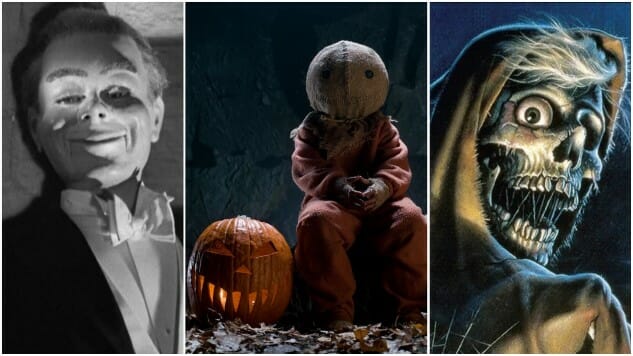
Although the concept of anthology movies could be said to date back as far as D.W. Griffith’s Intolerance in 1916, the storytelling device has always found a natural bedfellow with the horror genre. Perhaps it approximates oral tradition—different stories told by different speakers, gathered around a campfire or sharing a cabin on a dark and stormy night. Horror stories, often simplistic and straightforward by nature, can function well as bite-sized morsels of fright. Horror anthology movies, therefore, make room within the genre for tales that could never have supported feature-length films (although particularly successful anthology segments may very well receive that treatment).
Of course, the trick with horror anthologies is maintaining any sense of consistency. This is particularly difficult as the number of entries rises in any given anthology—three to five often seems to be the sweet spot, while anthologies with a few dozen stories (such as The ABCs of Death) tend to be frustrating just as often as they’re effective. The holy grail is the anthology that does everything well, both in its individual stories and framing device, with each story somehow contributing to the whole.
Here, then, is a list that features some of the genre’s most inspired anthology entries, spanning a period of nearly 75 years. You’re guaranteed to find something that will put you in the Halloween spirit, all year round.
These are the best horror anthology movies of all time:
25. The House That Dripped Blood (1971)Director: Peter Duffell
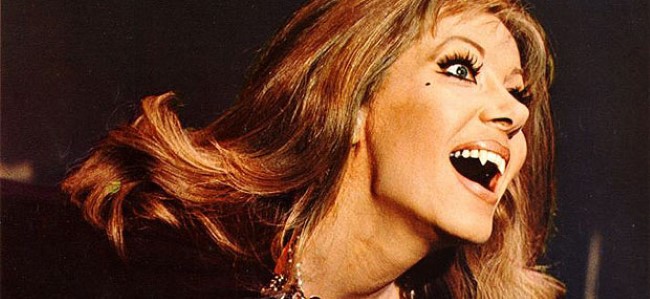
If the output of British film studio Amicus Productions usually lacked the refinement and grandeur of Hammer’s horror films, they always seemed to make up for it with cheeky, good-natured charm. Their anthology horror films, such as Dr. Terror’s House of Horrors, have a disarmingly simple quality to them—less the stately, stuffy gothic horror of Hammer, and more a continuation of the violent, ironic and comical horror stories seen in American E.C. Comics (Vault of Horror or Tales From the Crypt). The House That Dripped Blood is one of those vintage anthologies, centered around a cursed house continuously inherited by new tenants—which is to say, victims. Its tales are silly and basic, but it’s buoyed by a strong cast of familiar British faces, from the duo of Peter Cushing and Christopher Lee (they’re in different stories, sadly) to Raiders of the Lost Ark’s Denholm Elliott and consummate Hammer buxom beauty Ingrid Pitt. It’s the perfect film for a jovial, Halloween party atmosphere—vintage spooky, but never truly disturbing. —Jim Vorel
24. The Theatre Bizarre (2011)Directors: Douglas Buck, Buddy Giovinazzo, David Gregory, Karim Hussain, Tom Savini, Richard Stanley, Jeremy Kasten
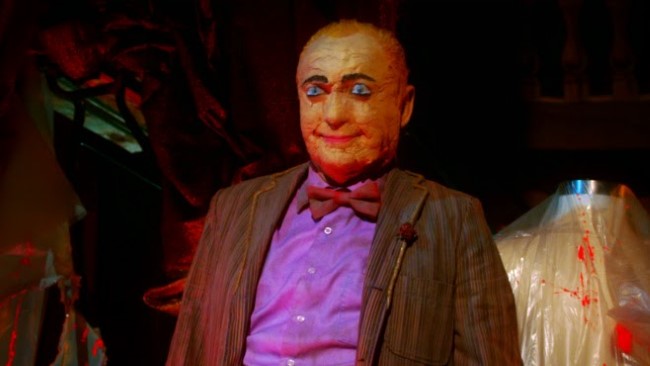
The Theatre Bizarre is an odd case for horror anthologies: The names you’re likely paying admission to see ultimately don’t end up being the film’s highlights. The likes of Tom Savini and Richard Stanley are the hooks for this grand guignol-themed take on the anthology structure, but their segments are both loosely structured and narratively inert. More interesting is the framing device itself, which sees a young woman lured into an abandoned theater, where a puppet (played by none other than Udo Kier) tells her stories as the two begin to metamorphosize. The film is also odd for the fact that its most acclaimed segment, “The Accident,” is really more of a melodrama than a horror short, out of place with the rest of the film while simultaneously delivering an emotionally powerful tale. —Jim Vorel
23. Trilogy of Terror (1975)Director: Dan Curtis
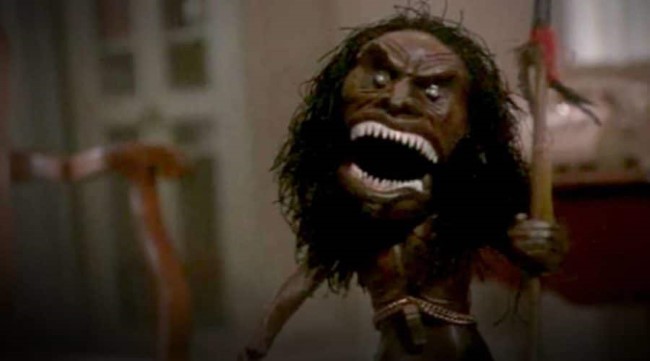
Many horror anthologies, especially older ones, are known to modern audiences specifically for a single entry, and this is especially the case in Trilogy of Terror, which first aired on ABC in March of 1975. Although all three segments star actress Karen Black and are based on the stories of Richard Matheson, it’s “Amelia” that captivated audiences: a quirky tale about a young woman who lives alone in a high-rise apartment, where she is menaced by an African “Zuni fetish doll” that magically comes to life wielding a spear and ludicrously large knife. It’s a silly, slavering, racially questionable antagonist, but its design is also surprisingly unnerving—although it’s hard to take the story seriously with Black’s over-the-top performance. The other two parts of this particular anthology are competent but less zany, mostly relying on Black’s sex appeal. “Amelia” remains the highlight, in a cheesily ’70s sort of way. —Jim Vorel
22. Ghost Stories (2017)Directors: Jeremy Dyson, Andy Nyman
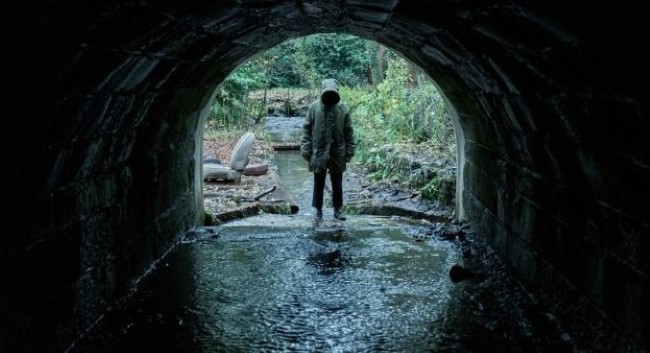
Ghost Stories, a joint directorial effort by Andy Nyman and Jeremy Dyson, who adapted the movie from the successful stage play they wrote together back in the late 2000s, isn’t workaday horror hackery. For most of its duration, it’s confidently made, atmospheric and deliciously macabre, a movie that feels like a throwback to yesteryear’s horror without consciously acting like a throwback. Those acquainted with horror history might detect echoes of Nicolas Roeg, Robin Hardy, Michael Powell and the productions of Hammer Films, that beloved British outlet of all things gothic and spooky, but even knowledgeable horror geeks must trace Ghost Stories’ influences on a molecular level. They’re ingrained instead of inserted. It’s the difference between knowing homage and unconscious referencing. Nyman and Dyson love horror. You can sense that love in Ghost Stories’ embrace of classic multi-narrative structure, wrapping a triptych of horror subcategories around the labors of its lonely hero, Professor Phillip Goodman (Nyman), a man who tasks himself with exposing paranormal charlatans. (Think John Edwards, Theresa Caputo, or Ed and Lorraine Warren.) It’s tough being the guy who charges the stage during televised psychic readings to rain on the audience’s parade, but that’s Goodman’s life. Then he gets a letter from Charles Cameron, a famed paranormal investigator and Goodman’s boyhood idol. Now decrepit and living alone in a van by the ocean, Cameron challenges Goodman to explain three supernatural cases he couldn’t solve himself. We’re off to the races, but we always come back to sad sack Goodman, who throughout his investigations can’t help noticing weird phenomena in between visiting subjects (notably recurring and increasingly abrupt encounters with an ominous parka-clad figure). He’s haunted, too, but mostly by his memories of growing up with his rigid, borderline abusive and presently deceased father. That’s the hook on which Ghost Stories hangs its ghastly musings, the thing we expect the film to circle back to once Goodman completes his inquiries and renders his verdict on the authenticity of each incident. As an abstraction, that sounds like a stairway leading to Frank Capra levels of sentimentality: By wrestling with his skeptical biases, Goodman will confront his buried feelings about his dad and reconcile with his past. Maybe it’s for the best that the movie never goes there. —Andy Crump
21. The Field Guide to Evil (2018)Directors: Ashim Ahluwalia, Can Evrenol, Severin Fiala, Veronika Franz, Katrin Gebbe, Calvin Reeder, Agnieszka Smoczynska, Peter Strickland, Yannia Veslemes
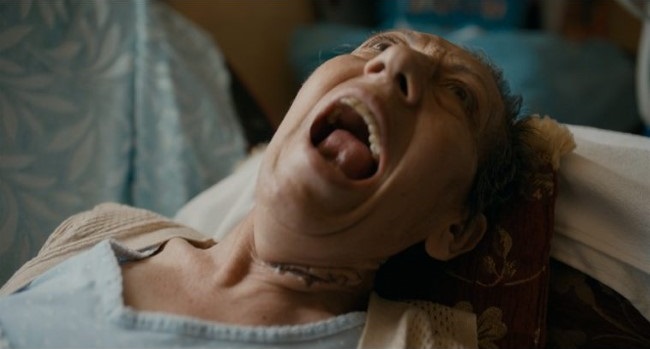
The Field Guide to Evil can boast an attractive central conceit: It’s a set of eight tales all grafted together from lore and the campfire warnings of eras past, in locations all around the globe. It makes for a haltingly effective assembly of pastoral folk nightmares, unfortunately undone to some extent by its inconsistency. Still, there are properly unnerving sights here, as well as some beautifully cinematic ones. In Veronika Franz and Severin Fiala’s “The Sinful Women of Höllfall,” the Austrian countryside is itself a star, as the dark and morose short (which really describes this anthology as a whole) features some incredible forested scenes (benefiting greatly from superb location scouting) in offering a glimpse of a conservative society punishing aberrant attractions among the local youth. So too is Can Evrenol’s minimalist “Al Karisi” segment likely to stick in one’s mind, as a young woman fears her newborn child will be abducted by a Turkish childbirth demon. Shockingly brutal in spurts, in violence both overt and implied, the dread induced by “Al Karisi” feels very much like the product of the same mind that gave us Baskin. —Jim Vorel
20. XX (2017)Directors: Roxanne Benjamin, Annie Clark, Karyn Kusama, Jovanka Vuckovic, Sofia Carrillo

It’s important that the scariest segment in XX, Magnet Releasing’s women-helmed horror anthology film, is also its most elementary: Young people trek out into the wilderness for fun and recreation, young people incur the wrath of hostile forces, young people get dead, easy as you please. You’ve seen this movie before, whether in the form of a slasher, a creature feature, or an animal attack flick. You’re seeing it again in XX in part because the formula works, and in part because the segment in question, titled “Don’t Fall,” must be elementary to facilitate its sibling chapters, which tend to be anything but. XX stands apart from other horror films because it invites its audience to feel a range of emotions aside from just fright. You might, for example, feel heartache during Jovanka Vuckovic’s “The Box,” or the uncertainty of dread in Karyn Kusama’s “Her Only Living Son,” or nauseous puzzlement with Sofia Carrillo’s macabre, stop-motion wraparound piece, meant to function as a palate cleanser between courses (an effectively unnerving work, thanks to its impressive technical achievements). Most of all, you might have to bite your tongue to keep from laughing uncontrollably during the film’s best short, “The Birthday Party,” written and directed by Annie Clark, better known by some as St. Vincent, in her filmmaking debut. XX is a horror movie spoken with the voices of women, a necessary notice that women are revolutionizing the genre as much as men. —Andy Crump
19. Fear(s) of the Dark (2008)Directors: Blutch, Charles Burns, Marie Caillou, Pierre di Sciullo, Lorenzo Mattotti, Richard McGuire
Animation tends to be underrepresented in the world of horror cinema; animated horror anthologies, even more so. The French Fear(s) of the Dark therefore stands out as a significant outlier, even before you factor in the choice to present all of its tales in different variations upon “black and white.” Visually, there’s nothing else quite like it: the five tales are moody and evocative, each one striking to behold, although they do tend to take their time in the telling. On the plus side, even if you can’t find a subtitled version, some of the segments have so little dialogue it barely matters, the film more of a visual tone poem on the ideas of “fear” and “darkness” than it is a collection of short stories. Its variety of animation styles is certainly a treat, ranging from dirty, smoky-looking charcoal and pencil sketching to crisp, black-and-white computer animation, conveyed in both two and three dimensions. A highlight is the segment directed by American cartoonist Charles Burns (of Black Hole), in which a man’s body is slowly corrupted by his girlfriend, who has become the host for a malevolent insect entity. As you might expect, it’s a bit on the gross side. —Jim Vorel
18. V/H/S (2012)Directors: Adam Wingard, David Bruckner, Ti West, Glenn McQuaid, Joe Swanberg, Radio Silence
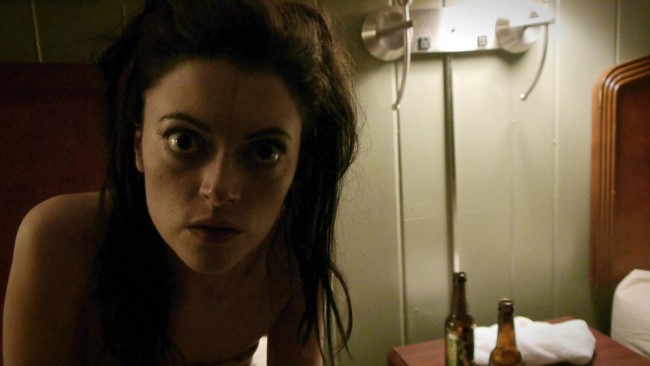
Worth repeating: Horror anthologies are, by nature, almost always uneven in terms of quality, but if there’s one constant, it’s that fewer is better than many. That’s one of the factors that helps V/H/S work better than, say, the unrestrained insanity of The ABCs of Death. V/H/S also bears a more coherent framing narrative, featuring segments by some of the best young directors in horror, such as Adam Wingard and Ti West, but it’s ultimately David Bruckner, director of the genre-bending 2007 horror flick The Signal, who steals the show with “Amateur Night.” About a group of douchey guys who bring home a strange girl from the bar and get much more than they bargained for when she turns out to be a literal monster, the story eventually received a full-on feature film treatment under the title of Siren. As for which of the first two V/H/S entries is strongest, though, it’s a bit of a toss-up. Both of them have highlight segments, a few downers and are overally really entertaining. The one thing there’s no doubt about is that they’re much better than the abortive 2014 second sequel, V/H/S: Viral. —Jim Vorel
17. V/H/S/2 (2013)Directors: Adam Wingard, Gareth Evans, Simon Barrett, Timo Tjahjanto, Jason Eisener, Eduardo Sánchez, Gregg Hale

Your taste in the V/H/S series will likely depend on which entry has your personal favorite segment. At the very least, the second film contains what might be the single best segment in the entire series, Eduardo Sanchez’s “A Ride in the Park.” Without giving everything away: It involves bicyclists, zombies and helmet-mounted GoPro cameras, which help give us a perspective we’ve never really seen in horror while deftly avoiding the question of “Why would anyone be filming this?” There’s still some not-great segments—really the ideal V/H/S would be a compilation that takes only the best segments from each entry to create a really solid horror anthology. One has to wonder if Viral killed this series for good, or whether they’ll eventually act like it never happened and release a straight-up V/H/S/3 one of these days. —Jim Vorel
16. Tales from the Darkside: The Movie (1990)Director: John Harrison
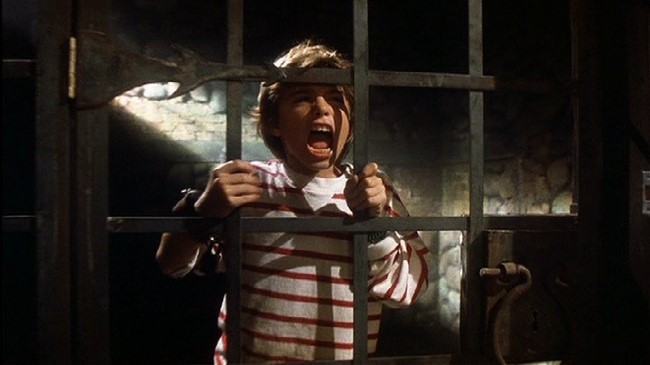
The spiritual successor to the first two Creepshow films was the Tales from the Darkside feature film—also an anthology—even more ridiculous and zany than Creepshow. The highlight is probably “Cat From Hell,” a segment that was originally supposed to be featured in Creepshow 2 about a seemingly evil cat tormenting and stalking a wheelchair-bound old man to punish him for his past misdeeds. Although honestly, my favorite aspect of Tales from the Darkside: The Movie is the anthology framing story, which involves a child chained up in the kitchen of a witch who is planning on cooking him for dinner. Like a take on One Thousand and One Nights, the kid (Matthew Lawrence) plays Scheherazade and distracts the witch (the one and only Debbie Harry) by telling horror stories until he can engineer his escape. It’s like something from an overgrown episode of Are You Afraid of the Dark?. —Jim Vorel
15. Tales from the Crypt (1972)Director: Freddie Francis
Modern horror fans can be forgiven if they associate the title Tales From the Crypt exclusively with the beloved 1990s HBO series that was the genesis point of so many horror careers, but the EC Comics series that inspired it (also including Vault of Horror and The Haunt of Fear) has itself been inspiring adaptations for quite a bit longer. Britain’s Amicus Horror Productions were a natural fit to take a crack at Tales from the Crypt in 1972, being a studio that specialized in horror anthologies, and although the comparatively lackluster Crypt Keeper will have you missing the more charming puppet host-to-come, the stories are bloody good fun. The stand-out, far and away, is “…And All Through the House,” in which a woman (Dame Joan Collins—that’s right) is terrorized by an escaped lunatic (Oliver MacGreavy), but can’t call the police … given that she just bumped off her own husband, minutes earlier, and has yet to dispose of the body. That killing is a stylishly executed murder, splashing blood across Hubby’s beloved newspaper, but what really makes the segment stand out is its Christmas Eve setting, lending it the hilariously macabre use of a number of radio Christmas carols while the action is unfolding. This may also be the first cinematic appearance of a “killer Santa Claus,” some 12 years before Silent Night, Deadly Night kicked off a small-scale moral panic in the U.S., which led to that film being pulled from theaters after only a week. Here? Nobody much seemed to care. —Jim Vorel
14. Tales of Terror (1962)Director: Roger Corman
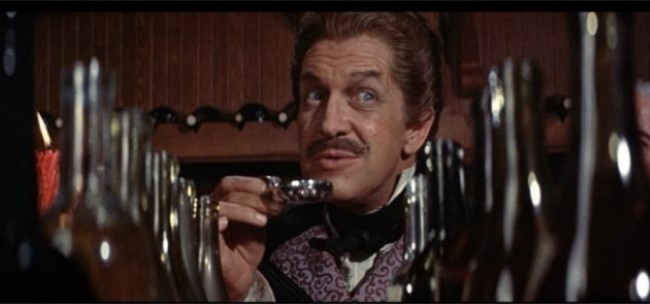
In the 1960s, B-movie producer extraordinaire Roger Corman set out on a mission to appropriate seemingly every Edgar Allan Poe story (and at least one H.P. Lovecraft one) that could be successfully adapted into a feature film that would turn a profit. This he did to great effect in flicks like House of Usher, Masque of the Red Death and The Pit and the Pendulum, but what of the stories too short for proper feature adaptations? That’s where this Poe horror anthology comes in. Corman has his way with the structure of these stories, reshaping them as he pleases, but they’re good fun thanks to the presence of Vincent Price in all three. Closer “The Facts in the Case of M. Valdemar” is a bit of a snooze, but middle chapter “The Black Cat” delights, pitting Price (as a snobbish aristocrat wine expert) against a career lush everyman played by Peter Lorre, who promptly runs circles around him in a competitive wine tasting. As you might have already guessed, “The Black Cat” is essentially an adaptation of Poe’s “The Cask of Amontillado,” to appropriately macabre results. —Jim Vorel
13. Body Bags (1993)Directors: John Carpenter, Tobe Hooper, Larry Sulkis

Sometimes, even anthologies with less-than-stellar stories can get by on sheer charming commitment to gross-out delights, and that’s John Carpenter’s Body Bags for you. Originally conceived as a gorier, more grotesque spin on the Tales From the Crypt formula for Showtime, the series was cancelled after only a few potential episodes had been filmed. Not wanting to lose the material, Carpenter simply assembled his favorites into a feature film (that feels like it was meant to be a film all along). Each segment isn’t particularly memorable, except for the closer, which features Mark Hamill as a baseball player who loses an eye and then gains the eye of a serial killer via a donation. You can guess where things go from there. What is memorable about Body Bags is the goofy wraparound segments, which feature Carpenter himself as a Crypt Keeper-esque mortician who gleefully hacks apart bodies and drinks formaldehyde, showing a much lighter hearted personality than you’d expect from the director of dour films like The Thing or Prince of Darkness. It’s fun to watch Body Bags today for the not-so-subtle genre references (“Another grisly murder in Haddonfield today…”) and the incredible array of character actors and cameos that were lined up, including the likes of Wes Craven as a leering perv, Stacy Keach as a guy receiving miracle hair transplants, Charles Napier as a baseball manager, Twiggy as a housewife (reuniting these two from The Blues Brothers), Roger Corman as a doctor, Tom Arnold as a mortician and Sam Raimi as a corpse. —Jim Vorel
12. Creepshow 2 (1987)Director: Michael Gornick
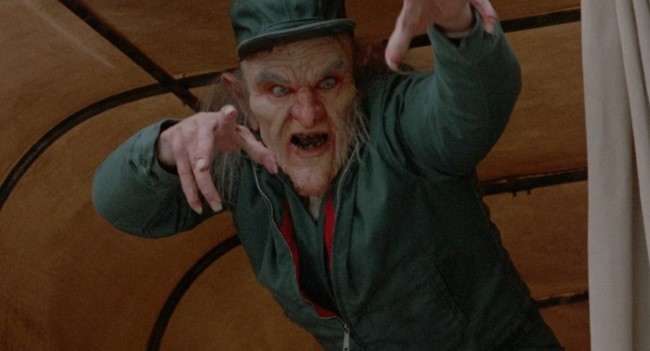
Creepshow 2 is very much a 1980s horror sequel: It attempts to largely replicate what audiences enjoyed about the first film iwithout mucking around too much with the formula, producing a good-but-not-quite-great effort in the process. Reducing the number of stories from five to three puts more weight on each individual entry; “Old Chief Wood’nhead” and “The Hitch-hiker” each have their moments, the first feeling like an HBO Tales from the Crypt episode and the latter like a Twilight Zone bit. It’s “The Raft” that is really worth the time here. One of Stephen King’s most simple stories makes for superb anthology content, with a premise that just can’t be beat: A group of teens are trapped on a raft in the middle of a lake, stalked by a blob-like creature that dissolves everything it touches, with spectacularly gory results. It’s like the 1980s remake of The Blob from Chuck Russell, simply cutting out backstory and subtext to focus on pure, primal action. Will the kids survive, or will they all be reduced to a pile of bones on the bottom of the lake? —Jim Vorel
11. Dr. Terror’s House of Horrors (1965)Director: Freddie Francis
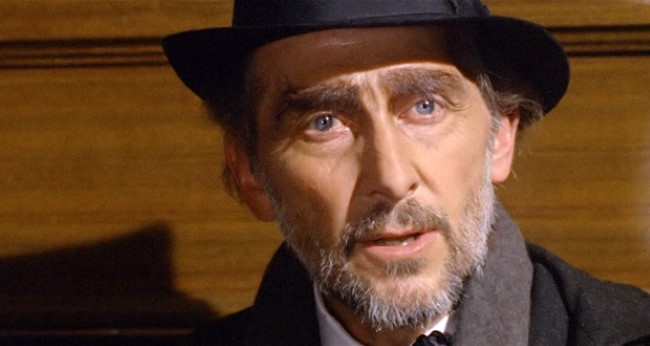
It’s hard not to fall in love with the Amicus Productions anthology Dr. Terror’s House of Horrors based on that glorious name alone. Come on—it’s amazing, full stop, with the rest just spooky icing on the creepy cake. Amicus is almost certainly the only film production company that has ever specialized specifically in horror anthologies, and Dr. Terror’s House of Horrors is particularly memorable for its framing device, in which a wonderfully costumed Peter Cushing (he looks so, so cool here), as “Dr. Terror,” deals out tarot cards to the other passengers of his train car, telling them how each will die. Those passengers include frequent Hammer collaborator Christopher Lee as a stuck-up art critic tormented by a disembodied hand belonging to an artist whose work he unfairly condemned, but each is engaging and moves along briskly. It soon becomes quite obvious where the wraparound story is going, but Dr. Terror’s House of Horrors is ultimately the exact sort of harmless fun that its title would imply. —Jim Vorel
10. Cat’s Eye (1985)Director: Lewis Teague
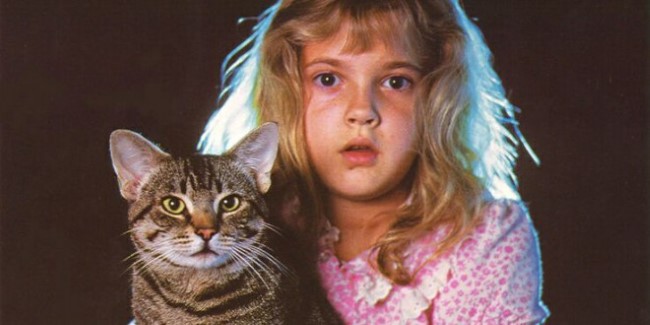
When you’ve produced as much short fiction as Stephen King, and had so many of your novels turned into feature films, it only makes sense that your short stories become fodder for countless anthologies. The man has likely inspired more anthology outings than any other author (except perhaps for Edgar Allan Poe). Cat’s Eye collects a few stories from King’s well-loved first collection of short fiction, Night Shift, while tossing in an original tale for good measure. Its framing device is a good one, as all three stories are seen from the perspective (more or less) of a cat, who passes idly through the first two before becoming the de facto protagonist of the third. The strength of King’s source material shines—“Quitters, Inc.” is very creepy, in a dystopian future sort of way, while “The Ledge” is reminiscent of the excellent Creepshow segment “Something to Tide You Over.” Even the new “General” is a silly joy, as it pits its cat (now the film’s main character, as it were) against a tiny little troll/gremlin determined to kill a 9-year-old Drew Barrymore in her sleep. It’s like someone reimagined Tom and Jerry as a horror film. In some strange way, it works. —Jim Vorel
9. Tales from the Hood (1995)Director: Rusty Cundieff
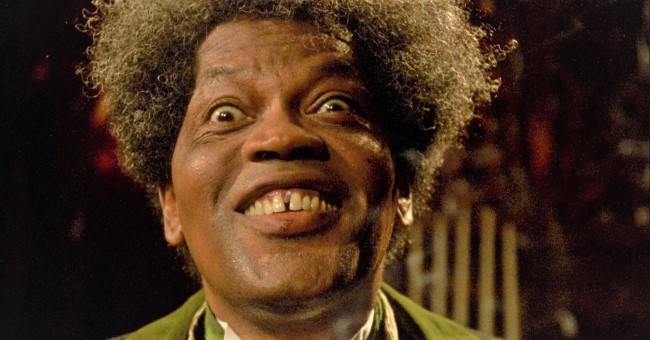
Transferring the formula established by Tales From the Crypt and other adaptations of classic EC Comics series to the inner city, Tales from the Hood was always bound to stand out as a unique entry in the horror genre. African-American horror has never been particularly common or accessible to most American cinemas, which also served to make Tales from the Hood something of a 1990s touchstone of the genre for Black horror fans. The film is stylishly executed, with delightfully over-the-top performances from pretty much everyone involved, including Corbin Bernsen as a racist Southern senator devoured by living dolls, or Clarence Williams III as the cock-eyed, hilariously sinister mortician who relates the film’s four stories. The visual effects, likewise, are often top-notch for the era despite its relatively low budget, the highlight being when an abusive character played by David Alan Grier (it’s strange to see him as a villain) has his body crumpled up into a ball via magical ritual, with disgustingly effective results. With clear commentary (not subtle, but undeniably relevant) on everything from police brutality and the war on drugs to gang violence and the stigmatization of mental illness, Tales from the Hood succeeds as both populist “scary” entertainment and genuinely impassioned social satire. —Jim Vorel
8. Asylum (1972)Director: Roy Ward Baker
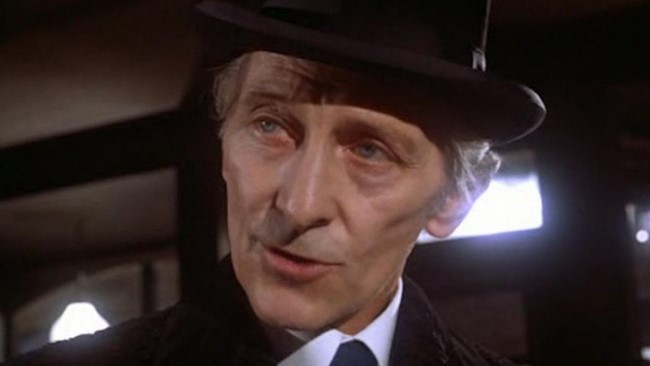
By the early 1970s, Britain’s Amicus Productions had essentially turned the production of horror anthologies into a science, and Asylum might be their overall strongest effort. Certainly, it has one of the most solid, if most obvious, framing stories, set in the titular asylum, where a new doctor must observe all the patients and is given the test of guessing which one is the hospital’s former administrator, now completely insane. Based on the writings of Psycho author Robert Bloch, each story affords more of a dignified, polished feel compared with some of the other, campier Amicus anthologies. They’re appropriately creepy, running the gamut from a tale about the dismembered body of a murdered wife returning to life to seek revenge, to a bizarre little ditty about a scientist seeking to transfer his soul into a tiny, robotic doll. All in all, though, Asylum comprises a variety of strong performances and appearances from the likes of Peter Cushing and Charlotte Rampling, while possessing a more cinematic presence than the silly framing story of something like Tales from the Crypt. That, and there’s all the “Night on Bald Mountain” you can handle. —Jim Vorel
7. Three… Extremes (2004)Directors: Fruit Chan, Park Chan-wook, Takashi Miike
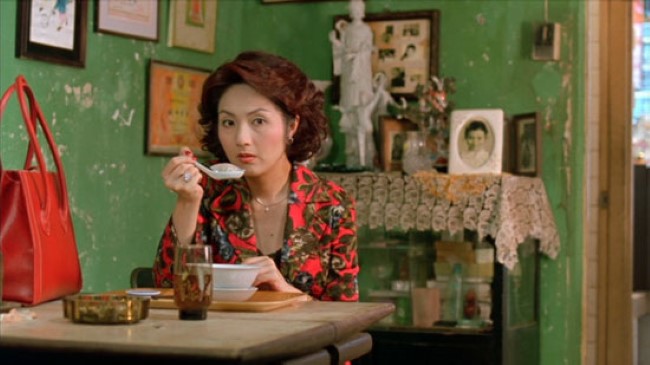
Three… Extremes represents an impressive collaborative effort to highlight East Asian horror in an era when the region’s horror films were scoring high-profile western remakes, incorporating segments by directors from three separate nations. The works of Takashi Miike and Park Chan-wook need little introduction—here, they largely play to their strengths, although Miike’s “The Box” represents the film’s strangest, most avant garde segment, a dreamy story of identity and memory that is open to some interpretation. Park’s “Cut” is more grounded in the here and now, playing like a half-satirical commentary on Saw and the extreme horror/torture movement of the genre that was gaining strength at the time. But it’s Hong Kong director Fruit Chan’s “Dumplings” that really brings the wow factor to Three… Extremes, as an oddly seductive, hypnotic thriller likely to make your stomach churn before it’s all over. It combines the relaxing, sedative quality of watching people do delicate work with their hands with the total immersion of effective storytelling, giving way slowly to the absolute terror of realizing the dumplings’ origins and their implications. More horrific still, though, is how the film’s characters deal with that revulsions and make their peace with it, in the name of their own selfish desires. The mystical overtones of “Dumplings” made the segment irresistible to adapt into a feature-length horror drama, but it’s at its simplest and most deeply unnerving here. —Jim Vorel
6. Southbound (2016)Directors: Radio Silence, Roxanne Benjamin, David Bruckner, Patrick Horvath

Tricksters and demons, vengeful spirits and serial killers, the hope of salvation and the lingering presence of Satan: These are the things that anthology film Southbound is made of. The film has a single vision but is built on a wide variety of grim and ghoulish horror tropes, all the better to satisfy the hungers of even the most niche genre connoisseurs. Best of all, though, the wild variations from one section of the picture to the next enhances rather than dilutes the viewing experience. It helps that there are common themes that run across the film—loss, regret and guilt make up a repeated refrain—and that the sum of its parts adds up to an examination of how people unwittingly architect their own suffering. But Southbound is first and foremost a work of velocity, a joyride through Hell well worth buckling up for. —Andy Crump
5. Black Sabbath (1963)Director: Mario Bava
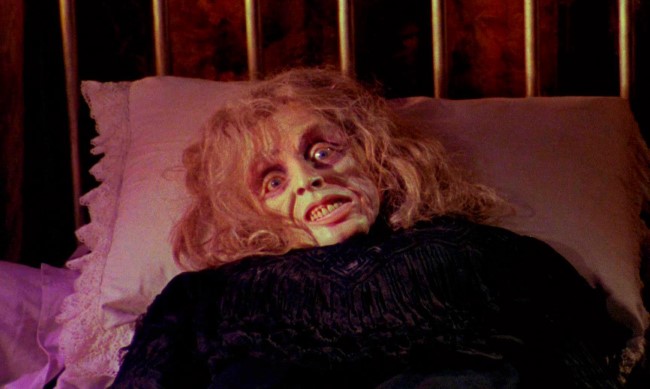
There was once a time before “Black Sabbath” merely conjured up images of Ozzy Osbourne caterwauling about an “iron man,” “war pigs” or being paranoid over the sounds of Tony Iommi shredding. Indeed, the band in question famously took their name from this celebrated anthology film, which spins three tales of Mario Bava-directed horror. The best is middle chapter “The Wurdulak,” starring horror icon Boris Karloff as a man who sets out to slay an undead creature (the titular “wurdalak”). To say any more would be to spoil this fascinating and subversive take on the vampire story, an absolute essential totem of the horror genre. —Mark Rozeman
4. Creepshow (1982)Director: George A. Romero

With George Romero directing every segment, Creepshow maintains a remarkable thematic and visual consistency. Working with Stephen King in his screenwriting (and unfortunately, acting) debut, Romero dives deep into a childhood obsession and love for EC Comics horror series, using vibrant, phantasmagorical splashes of color in a way that almost parallels how Sam Raimi would eventually evoke comic book panels in Spiderman 2. The stories themselves are wonderful, pulpy fun, from the gothic, ghostly “Father’s Day” to the bloody, beastly conclusion of “The Box,” which features the death of a truly irritating Adrienne Barbeau. But the highlight is a murderous Leslie Nielsen, in the sort of pompous, villainous performance that fans of The Naked Gun or Airplane! have likely never seen before. You owe it to yourself to see Creepshow for him alone. —Jim Vorel
3. Trick ‘r Treat (2007)Director: Michael Dougherty

One might call Trick ’r Treat the best kind of anthology—one that features plenty of disparate, interesting stories, but also ties its stories together in a distinctly satisfying, chronology-bending way. Director Michael Dougherty’s debut film sat on the shelf after being delayed for years, which was a great shame, as it’s far and away the best horror anthology of the 2000s. Somewhat less concerned with outright scares, it’s instead a celebration of Halloween, the idea of the holiday and of fright itself. The stories and characters intertwine on the same small town throughout Halloween night, intersecting in ways both classical (the ghosts of a long ago tragedy return) and modern (a coven of female werewolves, out on the town). Sly comedy and great performances from an array of familiar faces (Brian Cox, Dylan Baker, Anna Paquin) power each of the segments, and none of them overstay their welcome. Indeed, Trick ’r Treat is actually best enjoyed through repeat viewings, which reveal the crossovers between each story even better. In the middle of it all is Sam (Quinn Lord), the disturbing but somehow lovably round-headed spirit of Halloween, who observes in silence and punishes those who trample over the holiday’s traditional observances. It’s seminal “Halloween night” viewing—spooky but approachable, and a blast in all the right ways. Here’s hoping that the long-discussed sequel actually shows up one of these days. —Jim Vorel
2. Kwaidan (1965)Director: Masaki Kobayashi
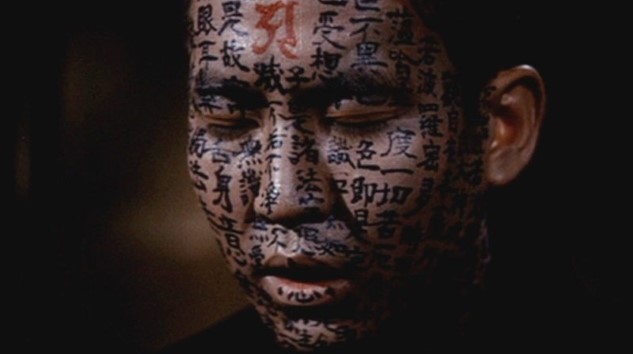
Ghost stories don’t get much more gorgeous than the four in Masaki Kobayashi’s sprawling Kwaidan. Between two acerbically political and widely lauded samurai epics, Hara-kiri (1962) and Samurai Rebellion (1967), Kobayashi led what was then Japan’s most expensive cinematic production ever, an anthology film with its parts loosely connected by Lafcadio Hearn’s collection of Japanese folk tales and Kobayashi’s intuitive penchant for surreal, sweepingly lush sets. In “The Black Hair,” a selfish, impoverished ronin (Rentaro Mikuni) abandons his wife to marry into wealth, only to realize he made a dire mistake, plunging him into a gothic nightmare of decay and regret. “The Woman of the Snow” follows a craftsman (the always welcome Tatsuya Nakadai) doomed to have everything he loves stolen from him by a patient bureaucratic specter. The movie-unto-itself, “Hoichi the Earless,” pits the titular blind monk musician (Katsua Nakamura) against a family of ghosts, forcing the bard to recite—in hushed, heartbreaking passages on the biwa—the story of their wartime demise. Rapt with indelible images (most well known, perhaps, is Hoichi’s skin completely covered in the script of The Heart Sutra to ward off the ghosts’ influence), “Hoichi the Earless” is both deeply unnerving and quietly tragic, wrung with the sadness of Kobayashi’s admission that only forces beyond our control hold the keys to our fates. The fourth, and by far the weirdest, entry, “In a Cup of Tea,” is a tale within a tale, purposely unfinished because the writer (Osamu Takizawa) who’s writing about a samurai (Noboru Nakaya) who keeps seeing an unfamiliar man (Kei Sato) in his cup of tea is in turn attacked by the malicious spirits he’s conjuring. From these disparate fairy tales, plenty of fodder for campfires, Kobayashi creates a mythos for his country’s haunted past: We are nothing if not the pawns of all those to come before. —Dom Sinacola
1. Dead of Night (1945)Director: Alberto Cavalcanti, Charles Crichton, Robert Hamer, Basil Dearden
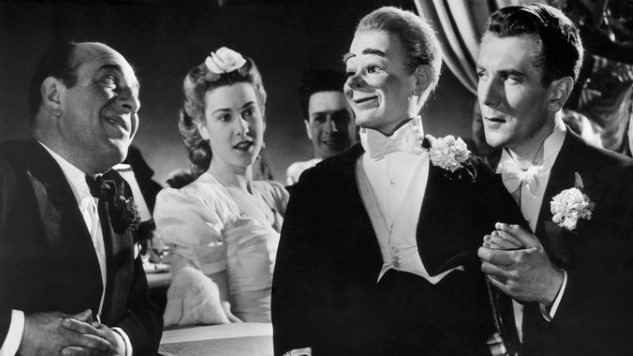
We can’t say with absolute certainty that 1945’s Dead of Night was the first film to ever combine a few loosely connected horror stories into an anthology format, but we are willing to say the following: The film that (maybe) did it first, actually did it best. This is the rarest of cinematic feats—we’ve been making horror anthologies for more than 70 years since Dead of Night without quite managing to top the experience. Some of that goes to the performances, as Welsh actor Mervyn Johns is excellent as a man who walks into an English cottage, knowing he’ll meet five other guests there who hold the key to his fate, and Michael Redgrave is spectacular in his most famous story, “The Ventriloquist’s Dummy.” Redgrave’s performance as a mentally deteriorating ventriloquist who may or may not be controlled by his own abusive dummy is something you have to see—you could hardly have had multiple Twilight Zone episodes (or even the Goosebumps movies) without it. But it’s not just the individual stories that make Dead of Night the greatest of horror anthologies, it’s how well they all work together. With the exception of the more light-hearted “The Golfer’s Story,” each tale operates within the same spooky tone, gradually ramping up the intensity until the film’s conclusion, the pièce de résistance: a mind-bending meta twist that combines all the stories into one, conceived and executed in a manner that is so shockingly modern that it seems like it could have been the work of Christopher Nolan. All these years later, no four directors have done it better. —Jim Vorel